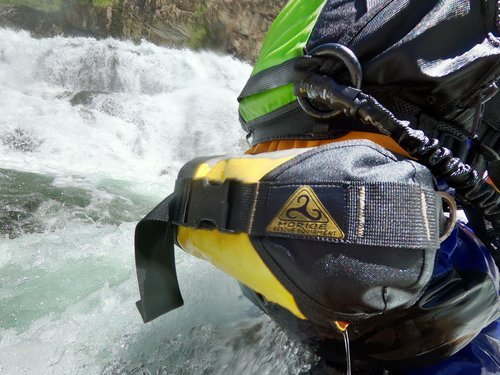Does the Type of Rope in a Throwbag Really Matter?
Throw bag rope types: Why are some throw bags so expensive?
There are a number of different throwbags and ropes to choose from. Your budget, the type of rivers you are running, and strength you need can help you decide the best option.
Rope type
To be effective and to reduce the risk of having a rope get stuck, river rescue rope needs to float. This is accomplished with materials having a specific gravity of less than 0(?). Polypropylene is a common material used, it is not expensive and floats but it is not a strong material, ropes that have an entire core made up of this are often less expensive but weaker.
Other materials are often used for the sheath and/or mixed in with the core to increase the strength of the rope. Spectra (Kevlar) and others are commonly used. These greatly increase the strength and durability but they add significantly to the cost.
For all types of ropes used in throwbags the larger the diameter, the greater the strength. In addition to being stronger, large diameter ropes are easier to grasp and see in the water. However larger diameter ropes can be harder to throw long distance accurately.
Smaller diameter ropes allow for smaller compact storage or longer length in comparable bags. They can be easier to throw accurately but are harder to grasp and can be more affected by the wind.
Another thing to consider is the sheath weave. Some manufacturers have changed the weave on the sheath altering the texture to improve the grip for both the rescuer and the victim.
If you are getting started and buying your first throwbag, you will have to weigh up the options compared to your budget. Our opinion is that spending the additional money for the higher quality rope pays off in the long run. These ropes tend to wear better lasting a longer time . Additionally because throwbags can be used for much more than just throwing to a swimmer, stronger rope is more versatile.
Check out our favorite Throwbag




